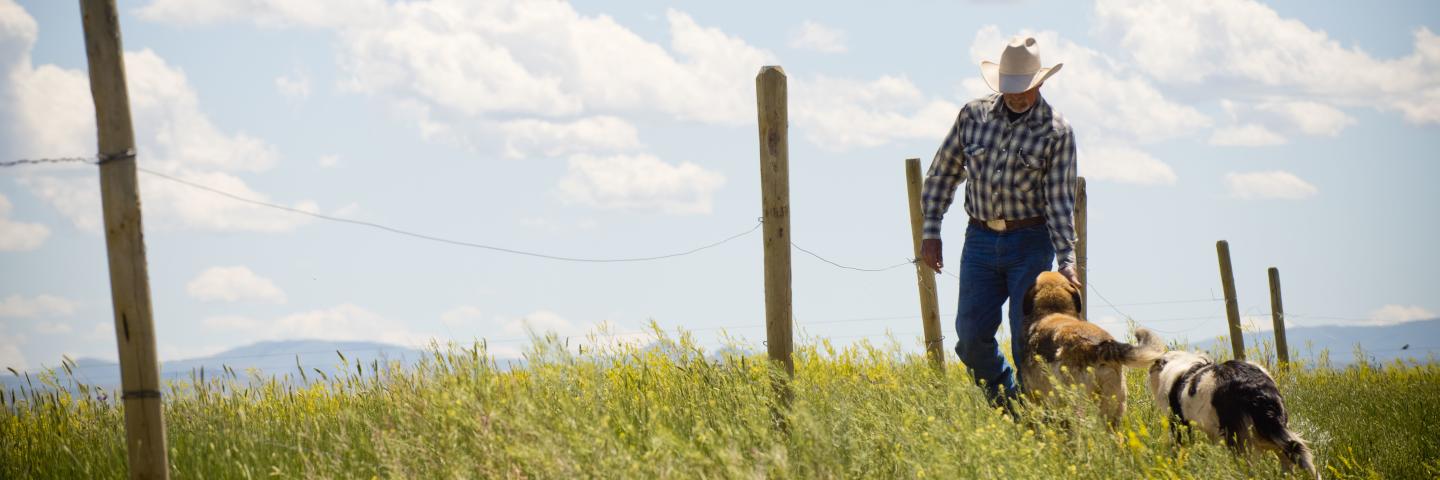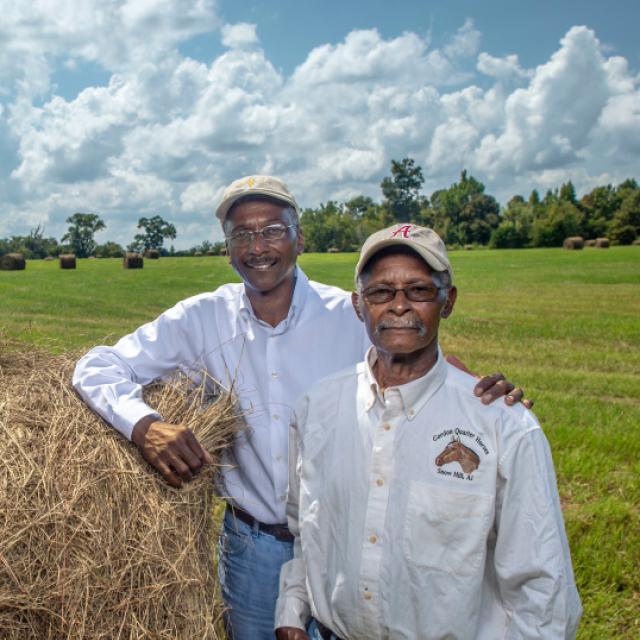
This Targeted Implementation Plan (TIP) is available in Custer and Powder River Counties, Montana. TIPs are local-level Environmental Quality Incentives Program (EQIP) initiatives used by NRCS in Montana to guide on-the-ground implementation of locally developed Long Range County Plans.
Project Description
County or Counties: Custer, Powder River
Primary Resource Concern: Terrestrial habitat for wildlife and invertebrates
Time Frame: Fiscal Year (FY) 2024 through FY 2026
The goal of this TIP is to improve habitat quality and connectivity of Long-billed Curlew habitat on working agriculture lands. This TIP will create, maintain, and enhance curlew habitat by implementing prescribed grazing on rangeland, and returning cropland to diverse perennial vegetation. Not only will this outcome provide better habitat for grassland birds, it will also provide private landowners with the opportunity to implement conservation practices on their land, improve range health, and increase awareness and knowledge of Long-billed Curlews and other grassland birds.
Conservation Practices Offered
- 224 Aquifer Flow Test
- 382 Fence
- 512 Pasture and Hay Planting
- 516 Livestock Pipeline
- 528 Prescribed Grazing
- 533 Pumping Plant
- 550 Range Planting
- 614 Watering Facility
- 642 Water Well
Detailed descriptions of these conservation practices can be found in the Field Office Technical Guide, Section 4 - Practice Standards and Supporting Documents.
Project Partners
- American Bird Conservancy
- Pheasants Forever
- Bird Conservancy of the Rockies
- Northern Great Plains Joint Venture
- World Wildlife Fund
- Montana Fish, Wildlife, and Parks
- Custer County Conservation District
- Powder River Conservation District
When to Apply
Program applications are accepted on a continual basis. However, NRCS establishes application ranking dates for evaluation, ranking and approval of eligible applications. Applications received after the ranking date will be automatically deferred to the next funding period. See Montana Programs and Application Dates.
Applications must meet the intent of this initiative. For more details about this initiative, contact your local field office.
Local Ranking Questions
NRCS uses these questions to evaluate eligible applications for this project and to prioritize applications for potential funding.
- During the Long-billed Curlew nesting season (May 1 – June 15), is the producer willing to avoid grazing on (Pick only one):
1) One pasture?
2) Two pastures?
3) Three or more pastures?
4) No pastures? - Will the practices in this application improve grazing distribution?
Yes
No - Will the practices in this application address inadequate stock water?
Yes
No - Will activities create or enhance a habitat block* of (Pick only one):
1) 160 to 319 acres?
2) 320 to 639 acres?
3) 640 acres or more?
4) Less than 160 acres?
* A habitat block is defined here as grassland uninterrupted (regardless of ownership) by non-habitat (cropland with the exceptions of hay land, buildings, or paved and gravel roads). - Does the application include (Pick all that apply):
1) Planting annual cropland back to native rangeland?
2) Planting annual cropland to a diverse mix of introduced forage?
3) Renovating degraded pastureland to a diverse stand of native or introduced forage?
4) None of the above?
Additional Montana Information
Targeted Implementation Plans (TIPs) are local-level Environmental Quality Incentives Program (EQIP) initiatives used by NRCS in Montana to guide on-the-ground implementation of locally developed Long Range County Plans. These plans are part of the "Focused Conservation” strategy to guide Montana's EQIP investments. Learn more about Montana Focused Conservation and Targeted Implementation Plans.
Additional Information
Apply for Environmental Quality Incentives Program (EQIP)
The Environmental Quality Incentives Program (EQIP) provides financial and technical assistance to agricultural producers and non-industrial forest managers.
Learn MoreFarm Bill
The 2018 Farm Bill was enacted on December 20, 2018. The Farm Bill continues its strong support for conservation efforts of America’s farmers and ranchers through reauthorization and expanded flexibility of NRCS conservation programs.
Learn MoreReady to get started?
Contact your local service center to start your application.
How to Get Assistance
Do you farm or ranch and want to make improvements to the land that you own or lease?
Natural Resources Conservation Service offers technical and financial assistance to help farmers, ranchers and forest landowners.

To get started with NRCS, we recommend you stop by your local NRCS field office. We’ll discuss your vision for your land.
NRCS provides landowners with free technical assistance, or advice, for their land. Common technical assistance includes: resource assessment, practice design and resource monitoring. Your conservation planner will help you determine if financial assistance is right for you.
We’ll walk you through the application process. To get started on applying for financial assistance, we’ll work with you:
- To fill out an AD 1026, which ensures a conservation plan is in place before lands with highly erodible soils are farmed. It also ensures that identified wetland areas are protected.
- To meet other eligibility certifications.
Once complete, we’ll work with you on the application, or CPA 1200.
Applications for most programs are accepted on a continuous basis, but they’re considered for funding in different ranking periods. Be sure to ask your local NRCS district conservationist about the deadline for the ranking period to ensure you turn in your application in time.
As part of the application process, we’ll check to see if you are eligible. To do this, you’ll need to bring:
- An official tax ID (Social Security number or an employer ID)
- A property deed or lease agreement to show you have control of the property; and
- A farm number.
If you don’t have a farm number, you can get one from USDA’s Farm Service Agency. Typically, the local FSA office is located in the same building as the local NRCS office. You only need a farm number if you’re interested in financial assistance.
NRCS will take a look at the applications and rank them according to local resource concerns, the amount of conservation benefits the work will provide and the needs of applicants. View Application Ranking Dates by State.
If you’re selected, you can choose whether to sign the contract for the work to be done.
Once you sign the contract, you’ll be provided standards and specifications for completing the practice or practices, and then you will have a specified amount of time to implement. Once the work is implemented and inspected, you’ll be paid the rate of compensation for the work if it meets NRCS standards and specifications.

